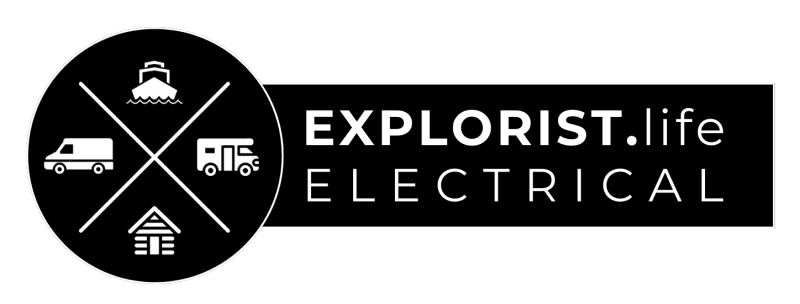
Air conditioners are incredibly power hungry and require a substantial amount of power to operate in a mobile, marine, or off-grid electrical system, but unlike electric space heaters like we talked about back in lesson 2.5 of this academy, air conditioners are typically more needed:
- During the summer when the days are longer & there is more solar recharging power available
- During the daylight hours, again, where more solar recharging power is available.
This means that if you have enough rooftop real-estate on your Van, RV or Boat or enough solar panels next to your off-grid cabin, you could potentially run air conditioning.
We need to know how much power air conditioners actually use so we can make informed decisions and that is exactly what I’m going to teach you here in lesson #6 of this Electrical System Sizing chapter of the EXPLORIST.life Mobile, Marine, and off-grid Electrical Academy.
Now the methods of estimating power usage I’m going to teach you in this video will work for many different types of air conditioners, so if you keep an open mind and think critically, you’ll be able to apply this information to your own specific project and the air conditioner you’ve chosen.

How Much Power Does an Air Conditioner Use?
Since off-grid air conditioning is such a huge investment, I think it’s very important for us to take a step back and dive deeper into air conditioner duty cycles, sizing, and efficiency; so in this lessons video, I’ve actually interviewed three industry experts in residential and commercial heating and air conditioning to provide some insight into these considerations so we can all make informed decisions.

Air Conditioner Usage Calculations
Now that we are all experts in air conditioning power consumption, let’s put that new knowledge to use.
For our example, we are going to be using the Nomadic 24V X3 DC Air Conditioner which is the newer model that we personally have on the EXPLORIST.life show van we built two years ago.
And right on the product page, it lists the max wattage as 1300w; which is consistent with it’s 55A rating in ‘max’ mode since 55A x 24V = 1320W

Since we understand that the duty cycle of an air conditioner should be an average of 50%, we can say that the air conditioner is going to use 1300W for 50% of every hour that it is on, so…
1300W x 50% x 1 hour = 650Wh.
If we had our air conditioner running for 6 hours, this would be
1300W x 50% duty cycle x 6 hours = 3900Wh.

Since this is a two stage air conditioner like Kolby mentioned with a ‘low’ mode, or ‘eco’ mode, as they are calling it, it can also operate at 30A, which 30A x 24V = 720W, and the math would be the same, just substituted with 720W.
720W x 50% duty cycle x 6 hours = 2160Wh

How Much Solar for Air Conditioning?
Since air conditioning is MOST needed during the daylight hours, we can utilize solar to offset battery drain; and here’s the easiest way to think about that.
If your solar panels are producing as many watts as your air conditioner is using, you can realistically run your air conditioner as long as you want given this guideline.
So… A 1300W air conditioner running at 50% duty cycle would require an average of 650W of actual power output from the solar panels to keep up.

But keep in mind that solar panels may not produce their rated wattage during the hot summer months. Solar panel efficiency decreases as cell temperature rises, and you may need more than 650W of solar panels to actually harvest 650W of solar power.
Also, keep in mind that you’ll need enough solar to re-charge whatever was used overnight the previous night.
How much power for Overnight Air Conditioning?
Now, if you are unfortunate enough to be vacationing in south Texas in August where it’s 90 degrees and 90% humidity overnight, you will need a VERY large battery bank to support overnight air conditioner usage.
1300W x 50% duty cycle x 12 hours of darkness = 7800 Watt hours.
For perspective, 7800 Watt hours is about 650Ah worth of 12V batteries just to run the air conditioner overnight with no other loads.

All of this is assuming a 50% duty cycle and if that increases due to extremely hot weather, so will the energy consumption.
Now, if you don’t have the budget for a solar powered battery bank large enough to support air conditioner usage, remember that a back-up fuel burning generator or high-powered alternator charging is always an option when you can’t drive to cooler locations.
Conclusion
Now you should have a good idea of how to calculate the power used by an air conditioner in a mobile, marine, or off-grid electrical system.
We will refer to this lesson later in this academy when we discuss full power audits, so be sure to bookmark it for future reference and come back to it if you need a refresher.
In the next lesson, I’m going to teach you how to determine the power required for LED Lights.
